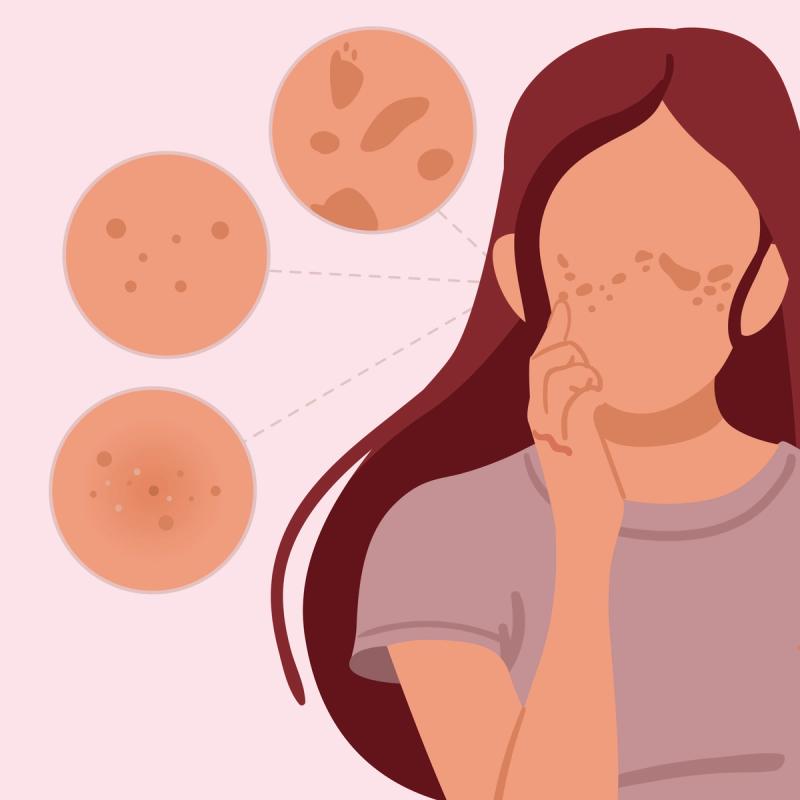Melasma, hyperpigmentation and sun spots all have one thing in common: They appear as darker patches of skin caused by an overproduction of melanin. While these conditions can differ in their causes, they share similar symptoms and often respond to the same treatments. Understanding their subtle differences can help you better manage and treat unwanted dark spots.
Key Takeaways
Hyperpigmentation is the umbrella term for any darkened patch of skin; melasma and sun spots are two specific types within this broader category.
Melasma shows up as irregular brown-to-gray patches, is driven mainly by hormone shifts (pregnancy, birth control), and flares with sun exposure.
Sun spots (age spots) are small, flat brown marks caused only by UV exposure, commonly appearing on sun-hit areas like hands, arms, shoulders, and face.
Daily broad-spectrum sunscreen is the best prevention. Proven treatments range from over-the-counter retinol and vitamin C to prescription hydroquinone, tretinoin, and in-office procedures.
What is melasma?
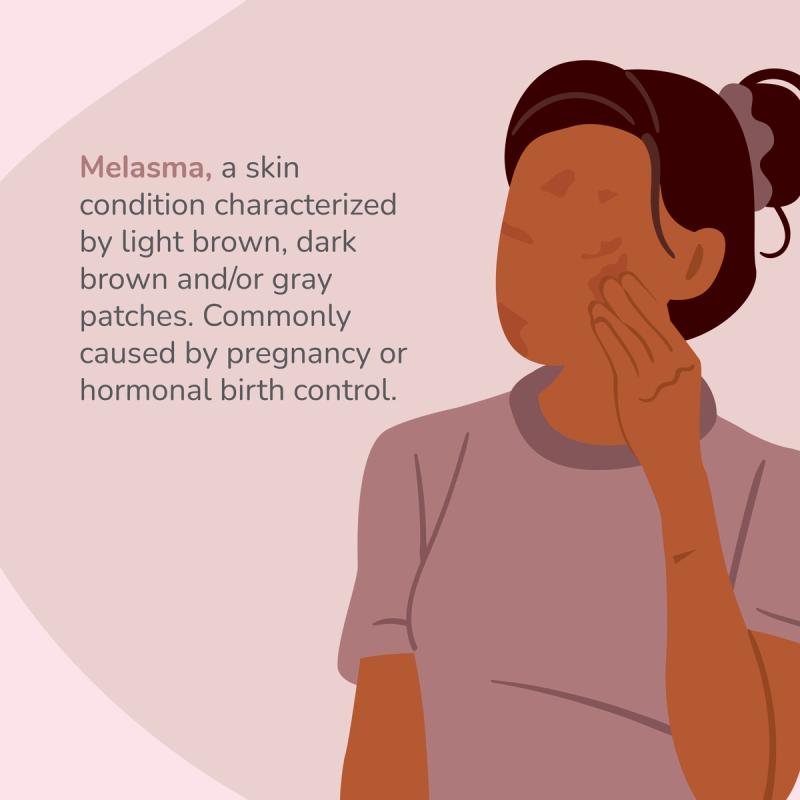
Melasma is a skin condition characterized by light brown, dark brown and/or gray patches. These darker spots can resemble freckles, or appear as larger, flat patches of discoloration. It most commonly appears on the face but can affect any skin exposed to sunlight.1
Melasma is a harmless condition that is associated with hormonal changes. The most common causes are pregnancy or hormonal birth control. While not directly caused by sunlight, UV exposure causes skin to produce more melanin pigments in those with melasma. A family history of melasma or a thyroid disease increases the risk of melasma.2
What is hyperpigmentation?
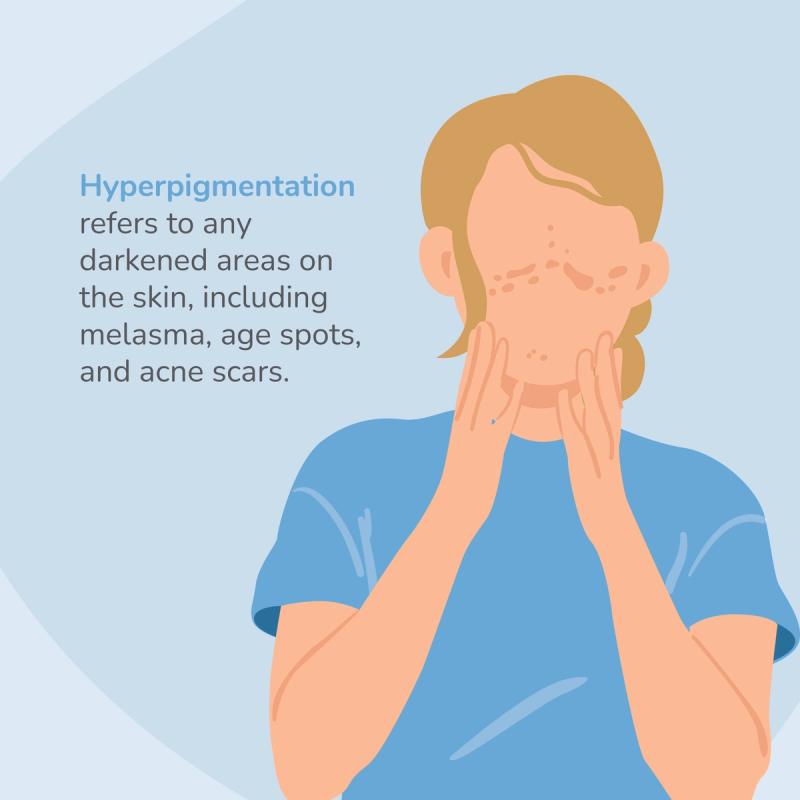
Hyperpigmentation refers to any darkened areas on the skin, including melasma, age spots, and acne scars.
Hyperpigmentation is characterized by an area of skin that produces more melanin than surrounding skin, resulting in darker spots. Sometimes referred to as “age spots,” hyperpigmentation is primarily triggered by sun exposure and occurs most frequently on the hands and face. It is usually a harmless condition.3
What are sun spots?
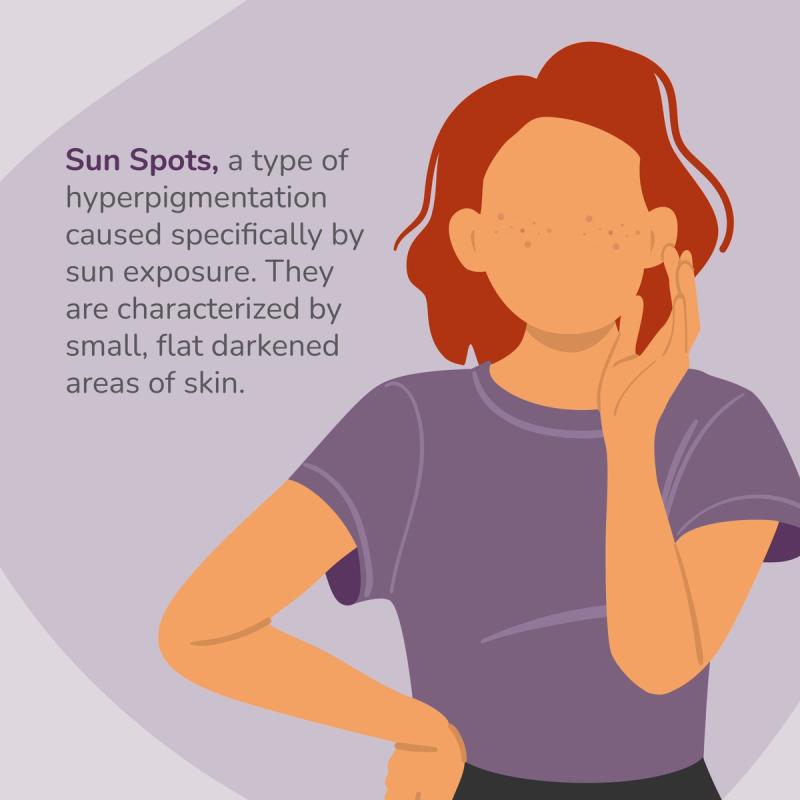
Sun spots are a type of hyperpigmentation caused specifically by sun exposure. Other terms include hyperpigmentation, age spots and liver spots. They are characterized by small, flat darkened areas of skin. They most commonly appear on areas of the body that receive frequent sun exposure, such as the face, arms, shoulders and hands.4
What are the differences between melasma, hyperpigmentation and sun spots?
Hyperpigmentation is a general term used to describe darkened patches of skin, regardless of the underlying cause. Melasma is caused by hormonal changes like pregnancy or birth control. Sun spots are a type of hyperpigmentation caused by sun exposure.
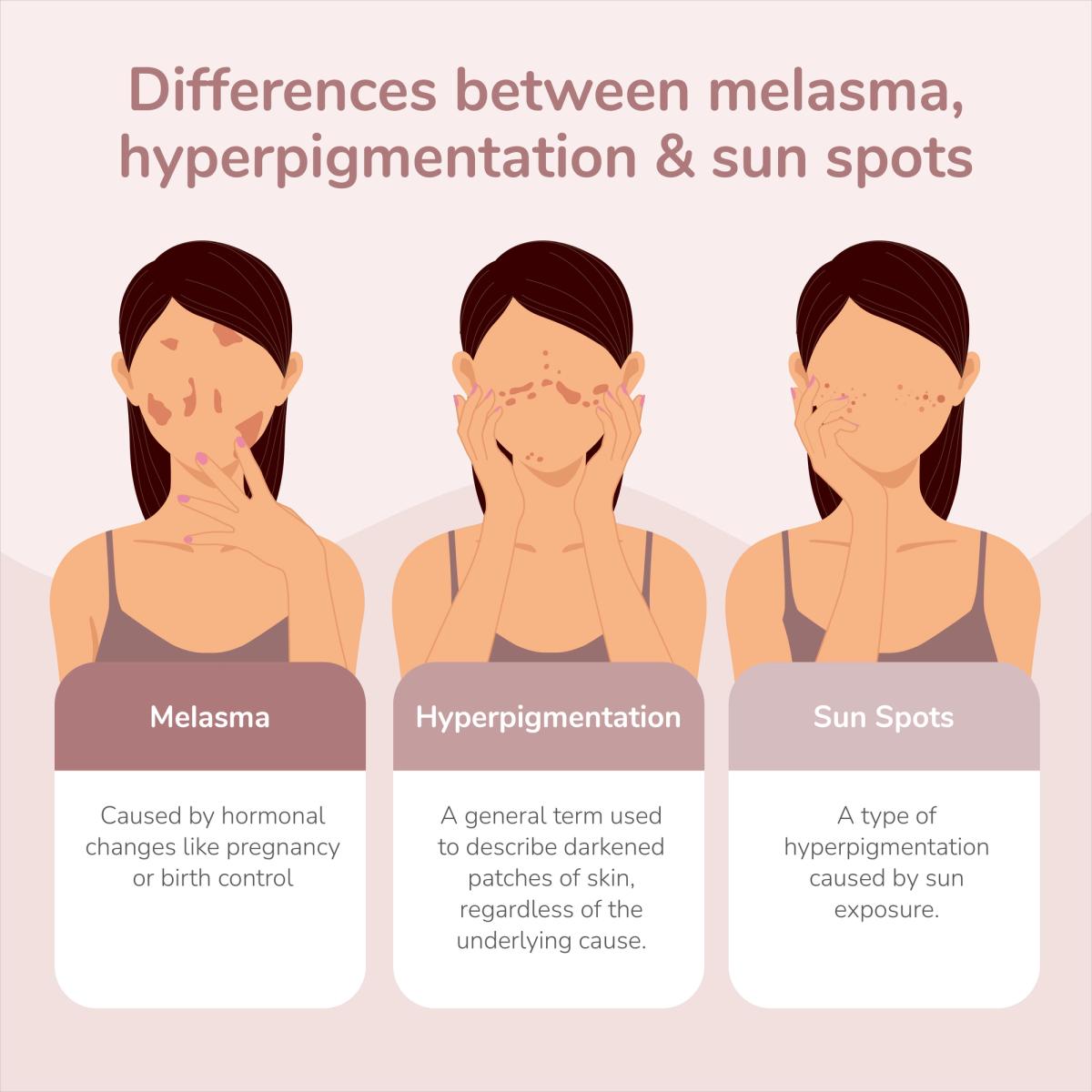
How can I prevent melasma, hyperpigmentation or sun spots?
The best way to prevent melasma, hyperpigmentation and sun spots is to avoid or limit sun exposure. Wear a broad-spectrum sunscreen on any skin that is exposed to sunlight.5
Avoiding hormonal birth control can help prevent melasma specifically.6

Anti-aging prescriptions for a fraction of the price.
Help your skin look its absolute best with RedBox Rx. Get anti-aging medications as low as $20/month.
Get StartedHow do treatments compare for melasma, hyperpigmentation and sun spots?
Treatments for melasma, hyperpigmentation and sun spots can help lighten dark spots for a more even skin tone. There are both over-the-counter and prescription options that can treat all three conditions.
Nonprescription Treatments
At-home treatments for hyperpigmentation include:7
Retinol-based skin care products.
Azelaic acid gel.
Vitamin C.
Vitamin B3 (niacinamide).
Kojic acid.
Salicylic acid.
Glycolic acid.
Thiamidol.
Arbutin.
Tranexamic acid.
Prescription Treatments
Tretinoin cream or gel (Retin-A).
Topical steroids.
Chemical peels.
Laser therapies.
Microneedling.
How effective are prescription topical treatments for hyperpigmentation, melasma and sun spots?
Prescription treatments for hyperpigmentation, melasma and sun spots are clinically proven to reduce dark spots. Review the chart below to learn about study results of topical medication treatments.
| Hyperpigmentation Treatment | Study Results |
|---|---|
Hydroquinone |
70% of users reported a reduction in pigmentation after using hydroquinone twice per day for three months.8 |
Tretinoin |
72% of participants reported improvement of hyperpigmentation after 24 weeks of tretinoin use.9 |
Tazarotene |
87% saw improvement in hyperpigmentation after 24 weeks of tazarotene use.10 |
Azelaic acid |
Two-thirds of participants had no hyperpigmentation after 16 weeks of azelaic acid use. Nearly half of study participants reported only 1% to 10% of beginning hyperpigmentation left at the end of the trial.11 |
Adapalene |
57% of adapalene 0.1% gel users and 59% of 0.3% gel users reported lightening of their sun damage.12 |
How RedBox Rx can help
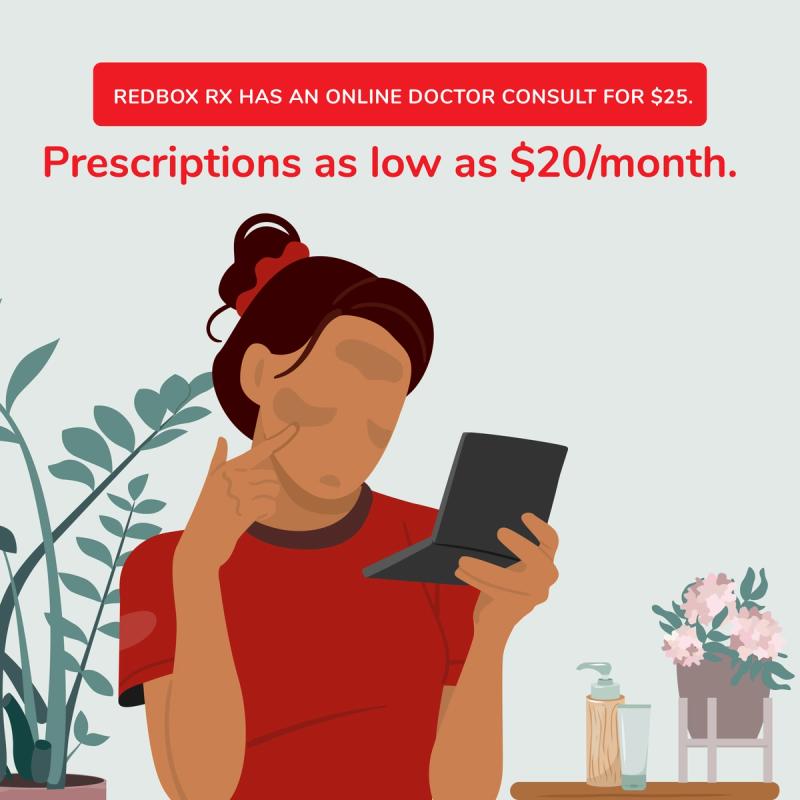
RedBox Rx makes receiving prescription treatments for hyperpigmentation, melasma and sun spots convenient and affordable.
Benefits of RedBox Rx include:
Transparent, affordable, flat rates for medications starting at $20/month.
$25 consultation with a U.S. licensed medical professional.
No insurance required. HSA and FSA eligible.
No office wait times or scheduling issues typical with physical medical practices.
FREE shipping directly to you. One-time, monthly and quarterly subscriptions available.
Get started on your journey toward better skin with our online assessment for anti-aging.

